Are you having trouble picking the right gray for your home? Benjamin Moore’s Lead Gray might be just what you need.
It’s a deep, rich gray that works well in many spaces. This color brings a bold, clean look without feeling too cold or too dark.
Lead Gray has a strong look but still feels calm. It adds style to any room without being too flashy. I’ve used this color in many homes over the years. It always stands out in a good way.
In this blog, I’ll explain how to use Lead Gray. You’ll learn where it looks best, how it affects a room’s feel, and what other colors go well with it. Whether you’re painting a full room or just a wall, this shade can make a big difference.
Keep reading to see how Lead Gray can help shape your space into something clean and bold.
Why Lead Gray (2131-30) Is the Perfect Choice for Your Space?

Lead Gray (2131-30) is a deep gray that feels balanced. It’s not too light and not too dark, making it easy to use in most rooms and in different lighting.
What sets this color apart are its soft blue undertones, which give it a bit of warmth and help avoid the cold, flat feeling some gray paints can bring.
Lead Gray can turn a plain room into something more stylish. It changes the mood of a space in a simple but powerful way.
This color also works well with both warm and cool shades. Try it with creamy whites for a soft look, or use navy blue for more contrast.
Its biggest strength is its flexibility. You can use it in many styles without it feeling out of place. Unlike trend colors that fade fast, Lead Gray stays popular. It has a timeless look that lasts.
Where Is Lead Gray (2131-30) Best Used in an Interior?
Lead Gray brings worldliness to any room, but it particularly shines in certain spaces. Before we explore specific rooms, consider that this color works well in both small and large areas. Depending on how you use it, it can make a statement or serve as a neutral backdrop.
1. Living Room
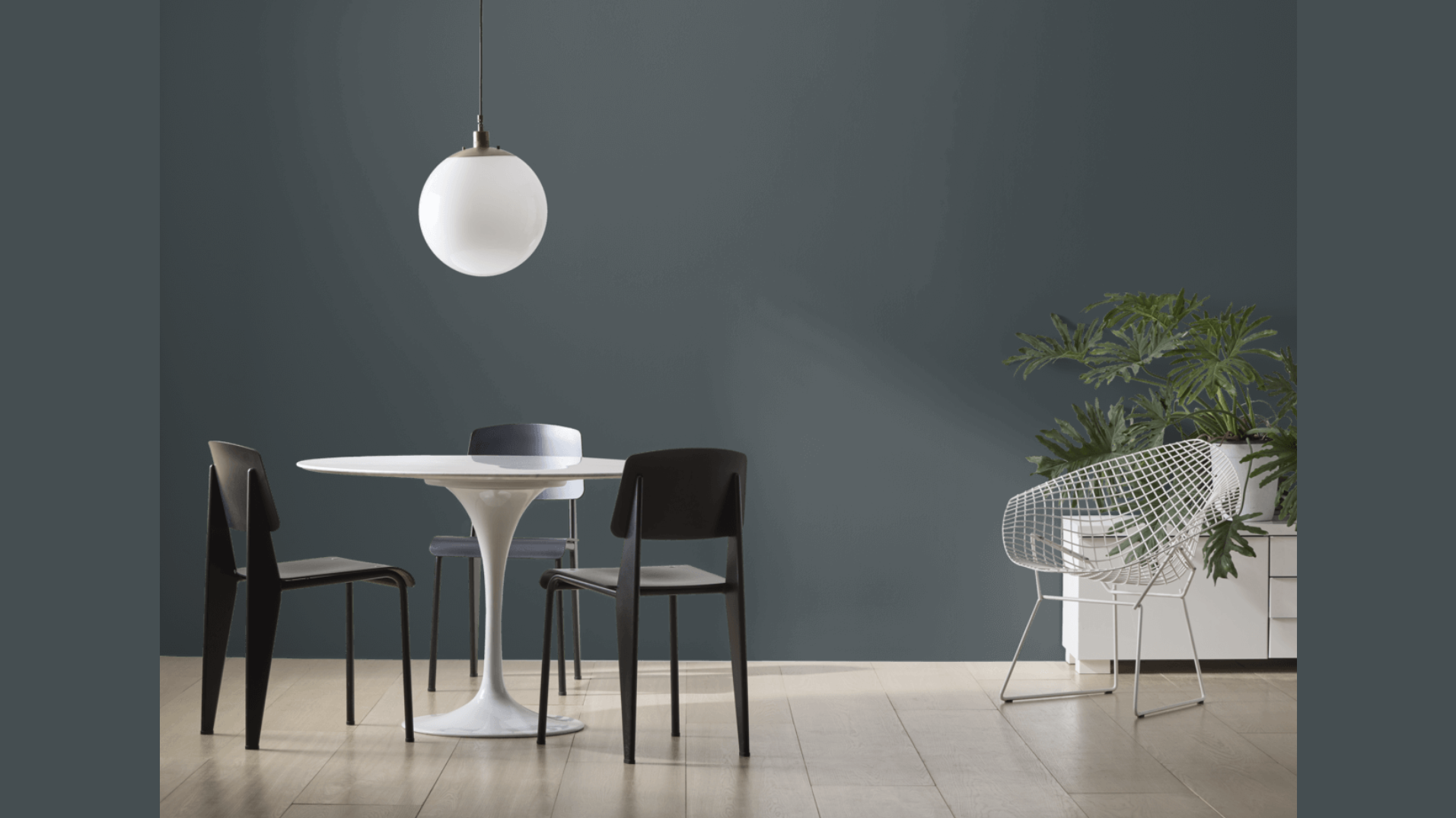
The living room is where we relax, hang out, and have guests over. Lead Gray gives the room a strong, calm feel. It adds depth without making the space feel heavy.
You can paint the whole room for a warm, cozy feel, or just paint one wall behind the sofa or fireplace, which creates a nice focal point.
This color helps balance out big furniture like large couches or TVs. It makes them blend in better instead of standing out too much. Wood furniture and gold or brass lights also look great with Lead Gray.
2. Bedroom
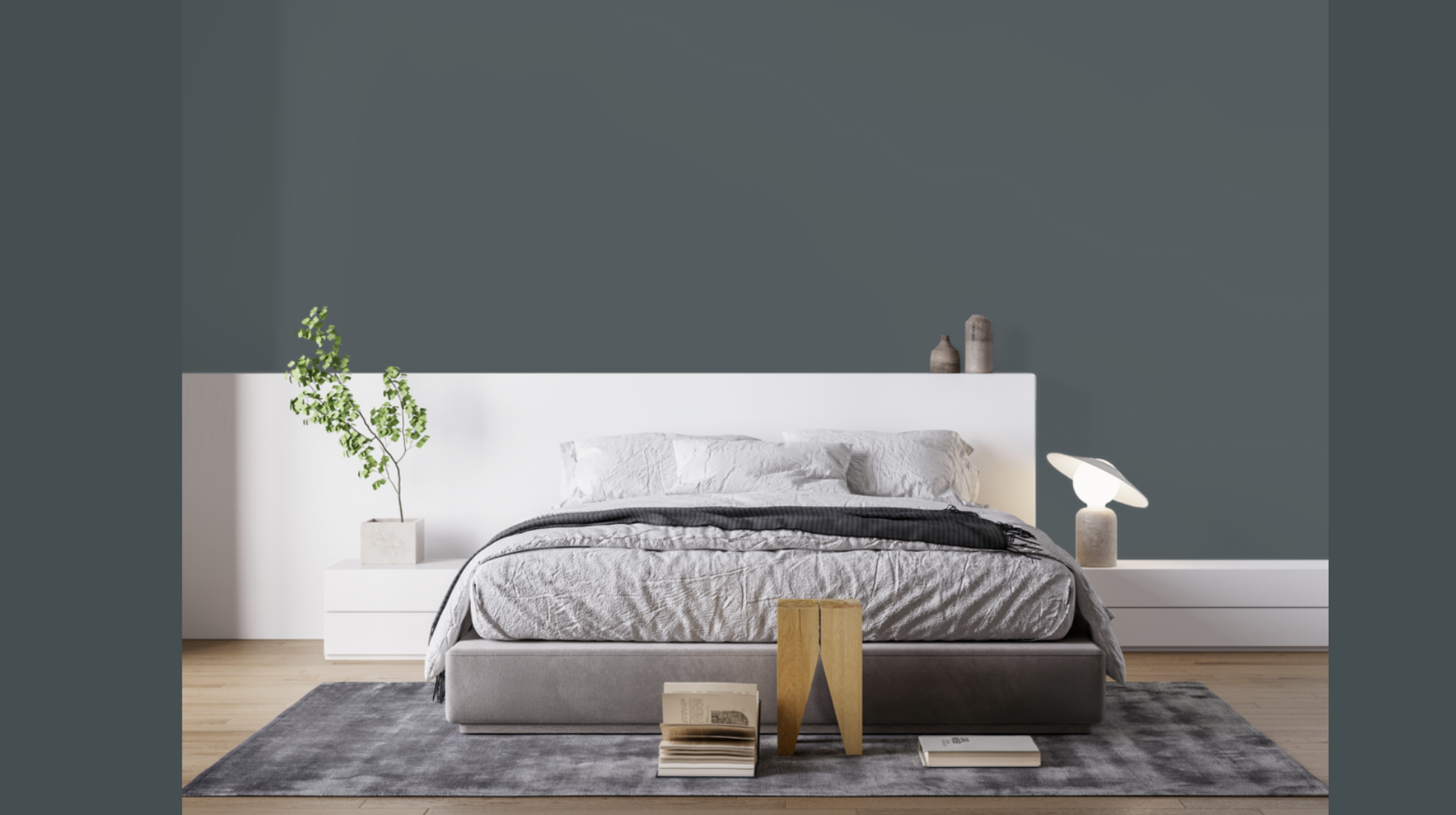
Lead Gray works great in bedrooms. It gives a peaceful, calm feeling that helps you rest. It feels like a cozy little space where you can relax and get away. It’s perfect for main bedrooms, especially if you want a more grown-up look.
Try painting the wall behind your bed. It adds interest without making the room feel dark. Match the paint with soft bedding in cream or light blue.
Use pillows, rugs, or blankets to add some texture. The light in the room will make the color shift a little during the day, keeping it looking fresh and calm.
3. Dining Room
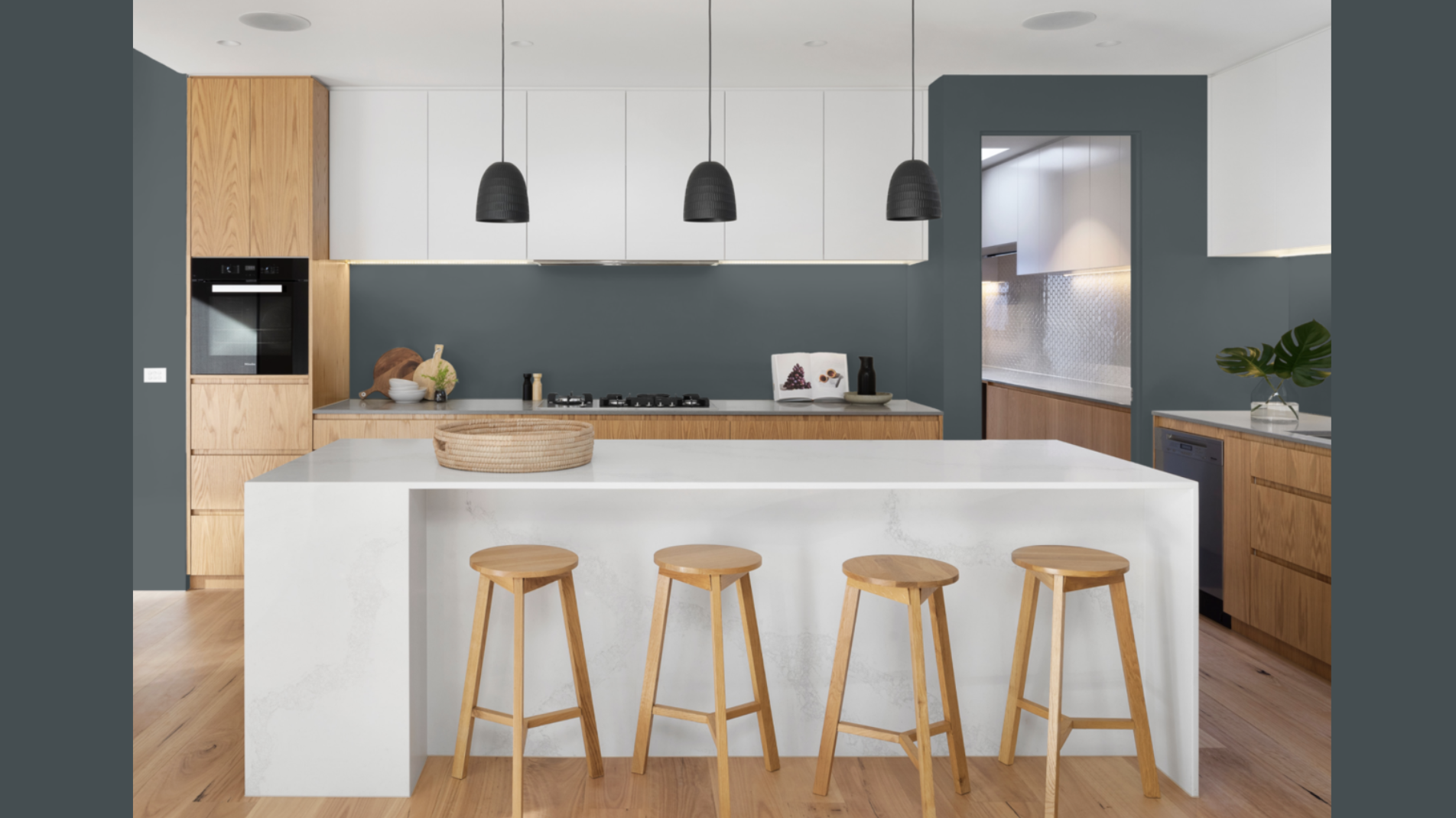
Lead Gray brings a fancy, strong look to dining rooms. It makes the space feel more special without adding too much color. This works well if your dining room is near lighter spaces. The contrast helps the area feel like its own zone.
White plates and clear glasses really stand out against this darker backdrop. A mirror or shiny picture frame can be hung to reflect light and make the room feel bigger.
A slightly darker color on the ceiling can make dinner feel more cozy. Lead Gray works with both classic wood tables and modern, clean styles.
4. Bathroom Walls
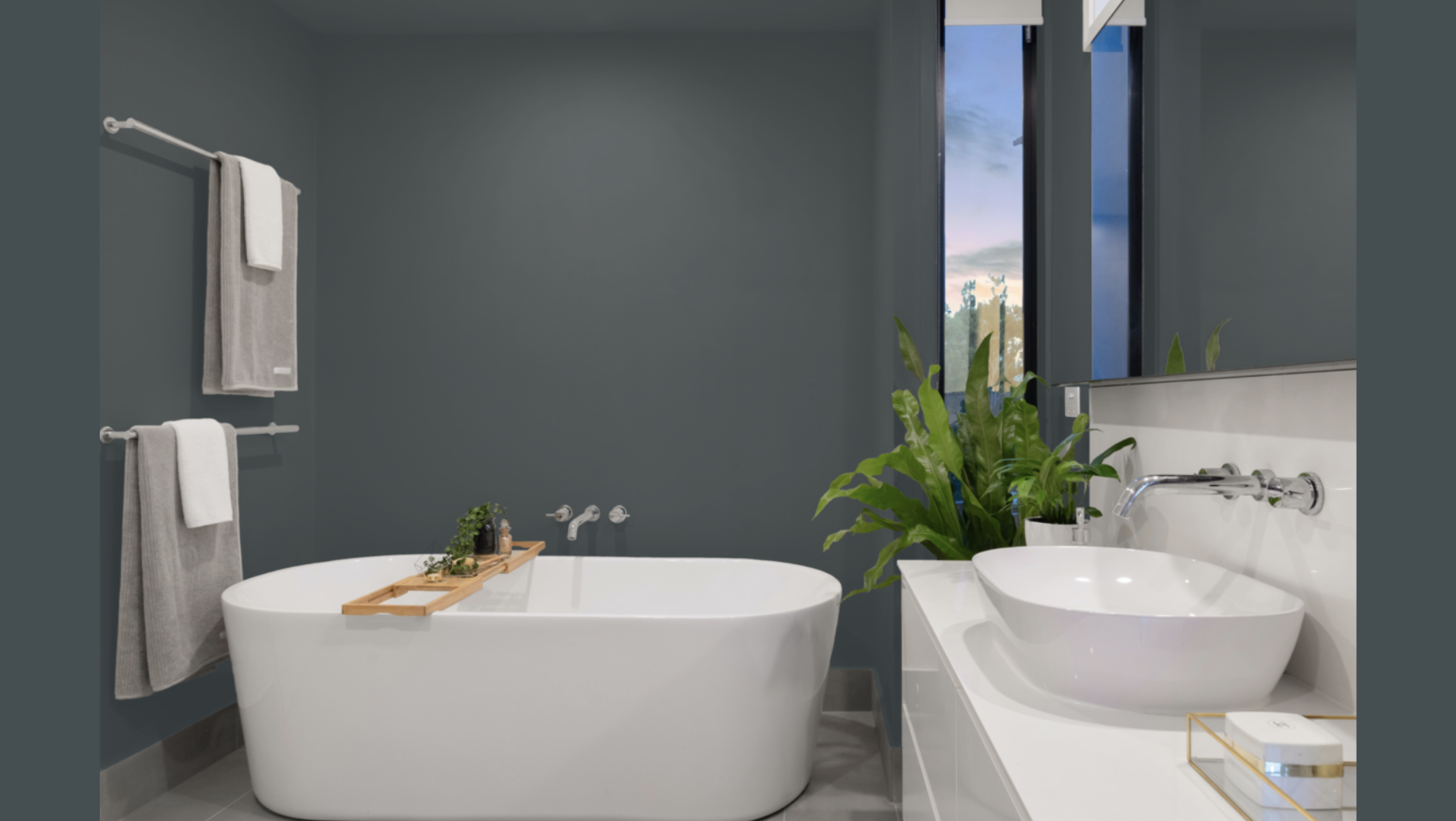
Bathrooms often feel small or plain. Lead Gray can make them feel bold and stylish. In a tiny powder room, it adds drama and makes the space feel special. In bigger bathrooms, it pairs well with white sinks and marble tops.
The sharp contrast makes everything look neat and fresh. Just make sure to use paint made for humid places. Lead gray also hides small watermarks better than light paint.
That makes it a smart pick for family bathrooms where there’s a lot of use. It looks great and helps keep the room looking clean longer.
5. Kitchen Cabinets
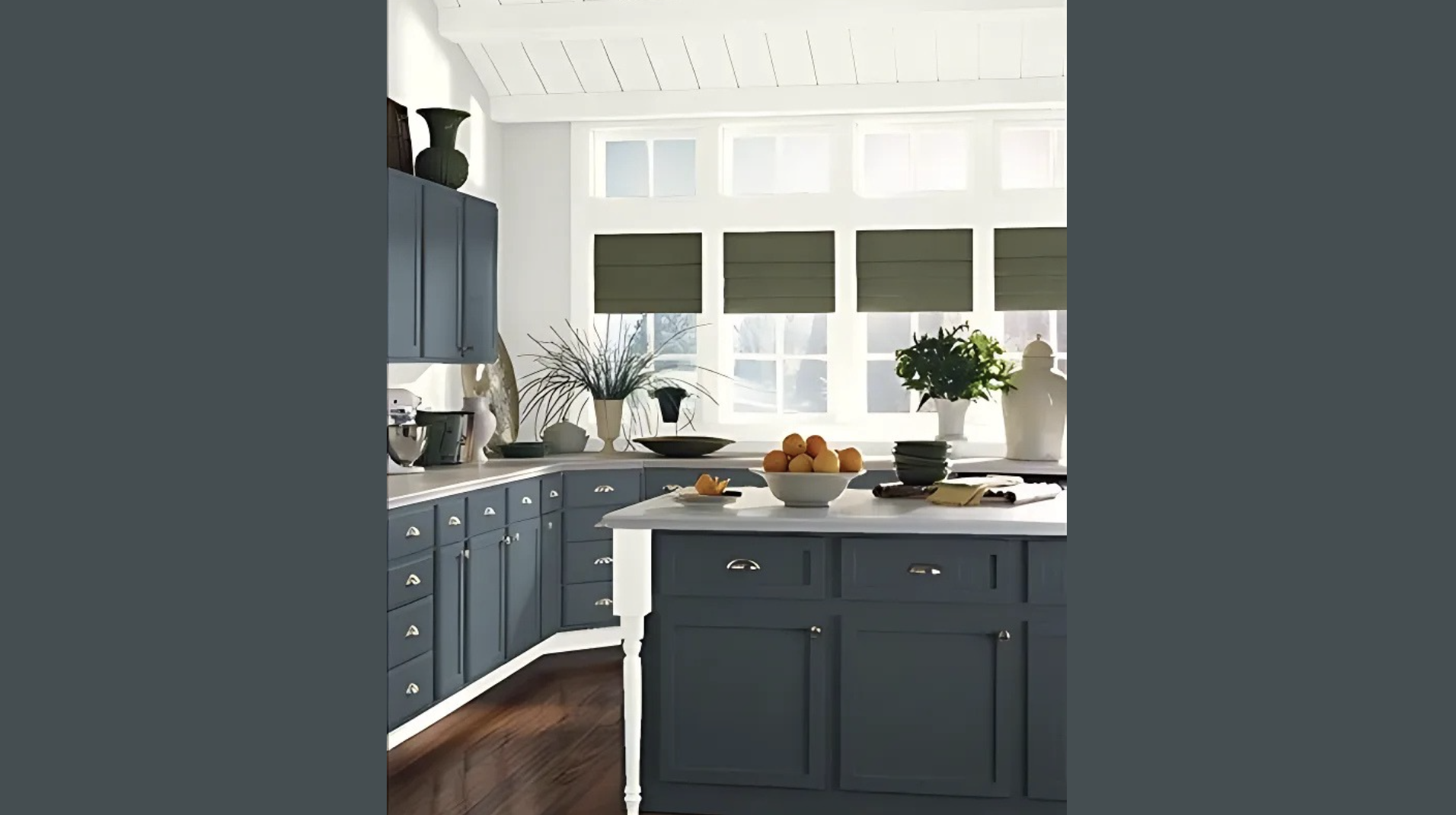
Lead Gray is a great choice for kitchen cabinets. Most people use white, but gray gives a more interesting and rich look. It also hides dirt and cooking messes better than light colors. Your kitchen will still feel bright but have more style.
You can use lead gray on lower cabinets and white on top ones. That combo looks polished and balanced. To finish the look, add gold or black handles.
This paint also works well on kitchen islands if you want a bold center point. It goes with most counters, like marble, wood, or stone. So even if you update your kitchen later, you won’t need to repaint.
The Psychology of Lead Gray (2131-30)
Colors can shape how we feel. Lead Gray brings a calm and steady mood to a room. It sits between black and white, giving it a balanced feel.
Its soft blue undertones add a peaceful touch. These cool tones help lower stress and create a quiet, relaxed space.
Lead Gray also helps with focus, which is why it works well in offices or study areas. It stays in the background and doesn’t distract.
It adds a clean, thoughtful look to living and dining rooms, which feels like a smart design choice. The color also grounds large, open spaces, making rooms feel more cozy and complete.
Depending on the light, Lead Gray can shift slightly. It feels cooler in dim light and warmer in sunny spaces.
How to Incorporate Lead Gray (2131-30) Into Your Home Decor?
Lead Gray pairs well with many colors. White trim adds a clean, classic look, while black accents give it a modern feel.
Warm shades like terracotta or mustard yellow stand out nicely. Soft blues and greens work great for a calm vibe, especially in bedrooms and bathrooms.
Light affects how Lead Gray looks. In north-facing rooms, it may seem cooler. In south-facing spaces, it can feel warmer. Warm light bulbs bring out their soft side, while cool bulbs show more of the blue tone.
Paint finish matters, too. Eggshell is best for most rooms—it is soft and easy to clean. Use satin or semi-gloss in kitchens and bathrooms. Matte gives a deep look, but it is harder to clean.
This color is a great backdrop for your style. Metals like brass or silver pop against it. Wood, plants, and textured fabrics make the room feel cozy and balanced.
Always test the paint first. Try a large swatch on your walls. Check it during the day and at night. Light changes everything. A small test can help you avoid mistakes. If unsure, a color expert can guide you to the right choice.
Conclusion
Benjamin Moore’s Lead Gray is a color that combines style and flexibility. It works well in almost any room, including living areas, bedrooms, kitchens, and bathrooms.
What makes it special is its deep, rich tone, which feels calm and balanced. It adds character without being too bold or loud.
You can use it on every wall or just one as an accent. Either way, it makes a big difference. It’s also a color that lasts. You won’t need to repaint soon, and you can switch up your furniture or decor without worrying if it still matches.
But before painting the whole room, always test the color first. Light changes how gray looks in every space.
Paint a sample on your wall and watch it during the day and at night. If it looks good and feels right, go for it. Sometimes, the right color clicks the moment you see it.
Frequently Asked Questions
What Colors Go Well with Lead Gray?
Lead Gray works well with clean whites, soft creams, and deep blacks for a timeless look. For more color, try navy blue, mustard yellow, or soft blush pink.
Metallic touches like brass, chrome, or gold also look great and add extra shine against the gray background.
Is Lead Gray a Warm or Cool Gray?
Lead Gray leans slightly cool due to its soft blue undertones. But it still feels balanced and calm. It’s not as cold or harsh as some other cool grays.
That makes it easy to use in many types of rooms, whether you want cozy or modern.
How Does Lead Gray Compare to Other Benjamin Moore Grays?
Lead Gray is deeper than Revere Pewter but lighter than Kendall Charcoal. It has more personality than plain, flat grays.
But it’s not as bold as colors with heavy green or blue tones. It fits nicely in between for a grounded, flexible option.
Will Lead Gray Make My Room Feel Smaller?
It can, but not always. Darker colors add coziness and depth. Lead Gray has enough softness to keep small rooms from feeling too tight.
Use good lighting and lighter accents to keep the space feeling open and balanced.

